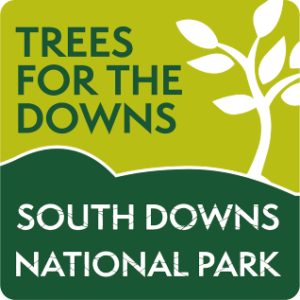Celebrating our wooded landscape on International Day of Forests
March 13, 2024
Woodlands are wonderful places to explore. Can there be anything more delightful to the senses than walking through an English woodland in spring? From the deafening dawn chorus of early morning to the heady scent of emerging bluebells, the squelching of mud underfoot and the insistent drumming of a woodpecker, there is so much to discover.
To mark International Day of Forests on March 21 we are celebrating the woodlands and forests of South Downs National Park.
The South Downs isn’t the first place that comes to mind when you think of a wooded landscape, but in fact the South Downs has more woodland than any other National Park in England and Wales, forming a vital component of the ecosystem and landscape.
Why are woodlands so good for us?
- Sited in the right place, blocks of woodland are not only an attractive landscape feature, but also offer homes for wildlife and shade for livestock and crops. They provide shelter from the wind and help prevent nutrient loss and soil erosion.
- Wild animals, birds and bats use the network of trees and hedgerows at a landscape scale to interconnect and move safely between habitats and they are a haven for all types of wildlife.
- Woodlands also offer natural flood management advantages, reducing flood risk by slowing the flow of water over the ground, infiltrating the less compacted soil, and soaking up the rain like a sponge.
- There are economic advantages to maintaining a well-managed wood. There are jobs in forestry, sawmills and in providing timber and wood fuel. “A wood that pays is a wood that stays” is a saying that emphasises the importance of using our timber resources effectively.
- Recreational opportunities are an obvious advantage to woodland creation. Forest parks such as Alice Holt near Alton, Queen Elizabeth Country Park near Petersfield and Friston Forest near Eastbourne offer visitors valuable outdoor activities such as woodland trails to discover by walking, mountain biking or running. Bikes can be hired across the National Park as well as inclusive equipment hire for those with accessibility needs. Kingley Vale national nature reserve is another popular woodland to visit in the South Downs and is known for its ancient and twisted yew trees, with one particular grove of veteran trees among the oldest living things in Britain.
- The health and wellbeing benefits of spending time in a woodland environment are well documented. Allowing yourself to slow down, relax and be part of the forest environment helps to lower blood pressure, reduce stress, improve mood and increasing the ability to focus.
Managing Woodlands
Conserving this precious treescape is not without its challenges. Pests and diseases such as ash dieback and Dutch elm disease are growing concerns across the country and will likely change our landscape dramatically.
But, through active management and maintaining a good diversity of tree species, we can significantly improve the chances for our native trees and ensure future generations of people, plants and wildlife can enjoy healthy woodland.
Woodland Opportunity Mapping
Planting the “right tree in the right place” is also an important part of managing the landscape. In 2022 the Sussex Nature Partnership, Woodland Trust and South Downs National Park Authority collaborated to produce a Woodland Opportunity Map for Sussex and the areas of the South Downs National Park in Hampshire.
This is a GIS based tool to help farmers, landowners and managers with initial guidance on identifying sites suitable for woodland creation in Sussex and South Downs National Park.
 Alongside this, the Trees for the Downs initiative has enabled parish councils, farmers, community groups and more to plant over 83,000 trees at 114 different sites across the South Downs National Park.
Alongside this, the Trees for the Downs initiative has enabled parish councils, farmers, community groups and more to plant over 83,000 trees at 114 different sites across the South Downs National Park.
Trees for the Downs is planting a mix of tree species, including disease-resistant elm, providing a healthy treescape for future generations of people, wildlife and plants to enjoy as well as increasing resilience to climate change.
